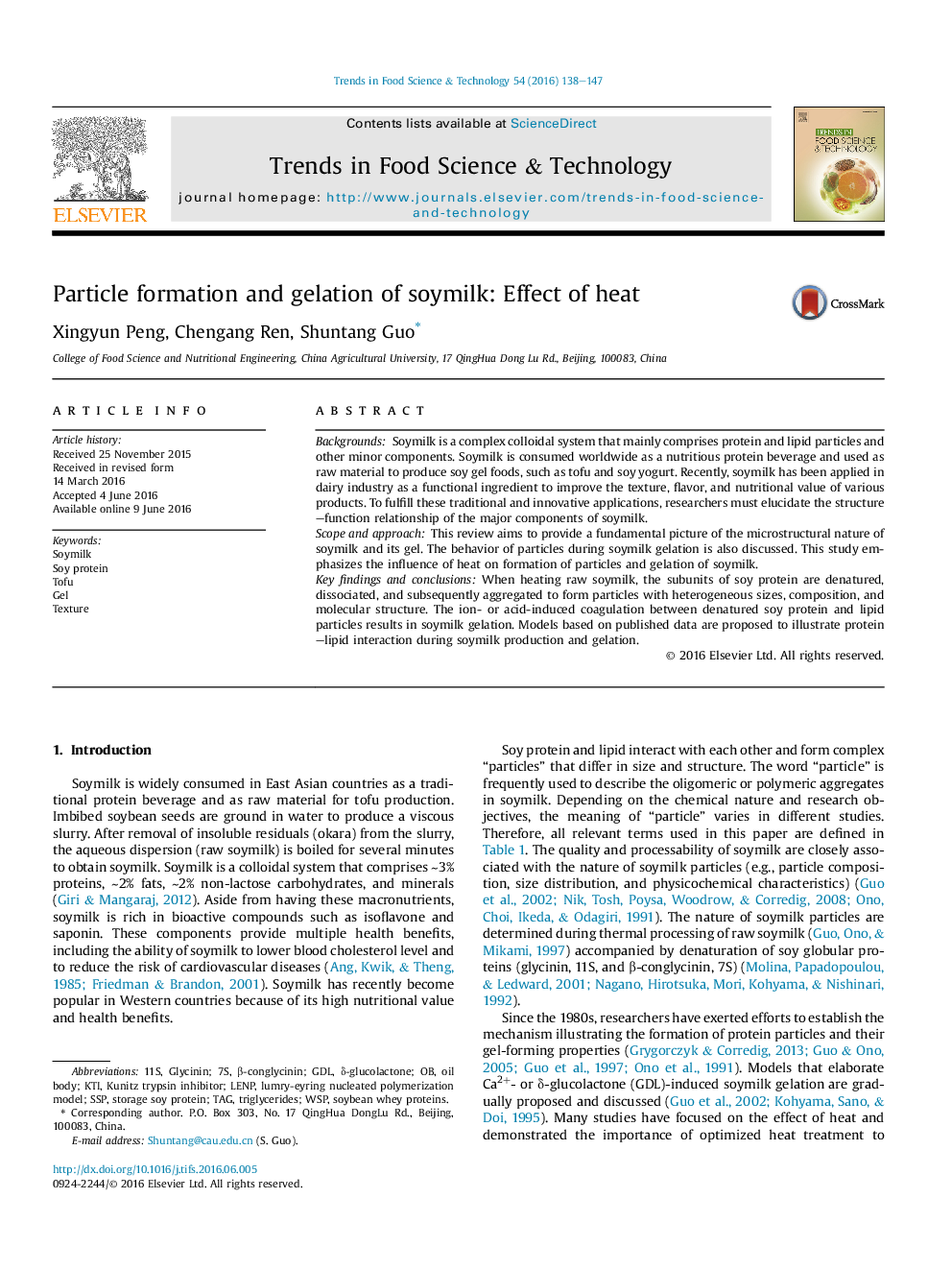| Article ID | Journal | Published Year | Pages | File Type |
|---|---|---|---|---|
| 2098503 | Trends in Food Science & Technology | 2016 | 10 Pages |
•Overview of the protein-lipid interaction in soymilk and tofu processing.•Models to demonstrate the microstructure of soymilk and its gelation mechanism.•Heat affects the quality (e.g., texture, stability) of soymilk and soymilk gel.
BackgroundsSoymilk is a complex colloidal system that mainly comprises protein and lipid particles and other minor components. Soymilk is consumed worldwide as a nutritious protein beverage and used as raw material to produce soy gel foods, such as tofu and soy yogurt. Recently, soymilk has been applied in dairy industry as a functional ingredient to improve the texture, flavor, and nutritional value of various products. To fulfill these traditional and innovative applications, researchers must elucidate the structure–function relationship of the major components of soymilk.Scope and approachThis review aims to provide a fundamental picture of the microstructural nature of soymilk and its gel. The behavior of particles during soymilk gelation is also discussed. This study emphasizes the influence of heat on formation of particles and gelation of soymilk.Key findings and conclusionsWhen heating raw soymilk, the subunits of soy protein are denatured, dissociated, and subsequently aggregated to form particles with heterogeneous sizes, composition, and molecular structure. The ion- or acid-induced coagulation between denatured soy protein and lipid particles results in soymilk gelation. Models based on published data are proposed to illustrate protein–lipid interaction during soymilk production and gelation.
